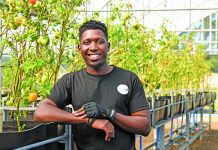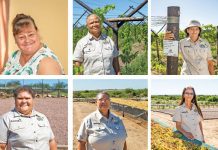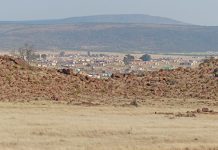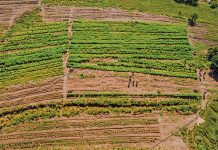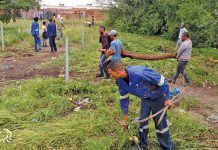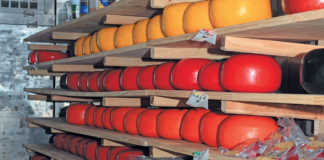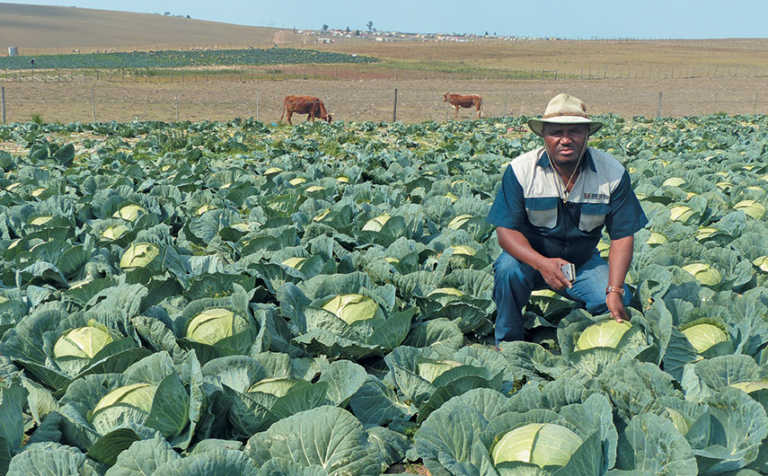
Photo: Mike Burgess
Sithembele Malgas always knew that he wanted to pursue a career in agriculture. While many of his friends left for the bright lights of the cities after school, Sithembele immediately began his studies for a diploma in agriculture.
Today, Sithembele is a successful vegetable and cattle farmer near Idutywa and Cathcart in the Eastern Cape.
READ The importance of a business plan for farming
He has steadily applied and improved upon his theoretical knowledge, which has enabled him to fine-tune production techniques in both these enterprises.
Sithembele was born in the communal area of Swartwater near Lady Frere in the former Transkei, where, like many boys of his generation, he tended the family’s livestock in his spare time.
After completing his diploma in agriculture at the Tsolo Agricultural College in the former Transkei, he joined the extension services of the then Transkei Department of Agriculture and spent several years in the communal areas surrounding Matatiele.
He used this opportunity to attend as many courses on agricultural production as possible.
In 1989, he was posted to Idutywa, where he set out to train farmers to grow out day-old chicks. But his efforts proved unsuccessful.
READ How young black farmers can make headway in the agri industry
“I tried to persuade [the community] to buy chicks and grow them out, but [most of them] gradually failed,’’ he recalls. “They didn’t see agriculture as a commercial field.’’
Frustrated at not being able to make the productive impact he had intended, Sithembele decided to start his own operation on a 40m x 60m plot, for which he had been granted a permission-to- occupy (PTO) order by traditional authorities and the Department of Land Affairs.
He hoped that if successful, his fledgling operation would serve as a model from which locals could learn. In 1990, he started out with 100 chicks, and within a few years was producing 2 000 chickens per cycle, which he sold to surrounding communities.
Chickens to vegetables
By 1997, exasperated at having to collect debt for chickens sold, Sithembele decided to introduce a cropping initiative.
He began by applying for more land, increasing the size of his operation to 3,5ha. He then applied for a R19 000 loan from the Land Bank for infrastructure, including a boundary fence, a borehole, and a dragline irrigation system.
He repaid the entire loan in cash after selling his first crop of 42 000 cabbages.
Now, 20 years later, Sithembele runs a thriving business that produces cabbages, spinach and butternuts in three cycles, and employs eight, full-time workers.
Although he is no longer involved in agricultural extension services, he still feels a responsibility to transfer his skills to others.
To this end, he currently mentors a student from King Hintsa TVET College near Butterworth and another from the Nelson Mandela Metropolitan University in Port Elizabeth.
Minimum tillage
Sithembele has established a number of measures to ensure high yields and a steady output of healthy produce.
He has divided his 3,5ha plot into five sections, which enables him to stagger production and thereby ensure a continual supply to markets.
He practises minimum-tillage, which not only saves on mechanisation costs, but conserves his soil.
READ Using no-till practices for long-term sustainability
“I don’t plough, I simply plant,’’ he says. “By ploughing too much, you end up losing your soil to the sea.’’
From the start, Sithembele has had soil samples analysed at the Dohne Research Institute, and has applied its recommendations on fertiliser application diligently, which includes a top dressing with LAN.
He also uses kraal manure, sourced from communal farmers, that is worked into each plot once every five years using a rented tractor, the only time his land sees any form of mechanisation.
Finally, he maintains a strict spraying regime to control weeds and pests. The entire plot is planted to cabbages, starting in late February.
This is followed by 2ha of spinach in July/August, and butternuts on the full plot again, starting in late October.
Cabbages represent his most profitable crop, with the five sections producing 11 000, 14 000, 14 000, 13 000 and 15 000 plants respectively, for a total of 67 000. Seedlings are sourced from Rainbow Seedlings in East London and planted by hand at an intra-row spacing of 600mm, and an inter-row spacing of 900mm.
Although Sithembele has used several cultivars over time, he has been particularly impressed with the Megaton and Menzania varieties.
These grow a head of up to 13,9kg, which he markets for R15 each. The average weight of cabbages produced from these cultivars is between 5kg and 8kg for Megaton, and 4kg and 6kg for Menzania.
Central to his success is his location. He is situated 10km outside Idutywa, where he supplies three supermarkets. According to Zola Zinja, manager of Spargs Superstore in Idutywa, Sithembele’s consistent supply, quality and proximity make him a sought-after supplier.
“He’s reliable and just a phone call away,’’ says Zola, who sources up to 900 cabbages a week from Sithembele at peak times.
At this stage, demand exceeds production, mainly due to a lack of competition.
“I’m lucky because I’m the only [commercial] producer in this municipal area,” says Sithembele.
Beef cattle
Although Sithembele had farmed cattle and goats in the communal areas, his vegetable operation gave him the financial clout to venture into commercial beef farming.
He started by buying a 747ha farm in the Henderson area of Cathcart in 2000.
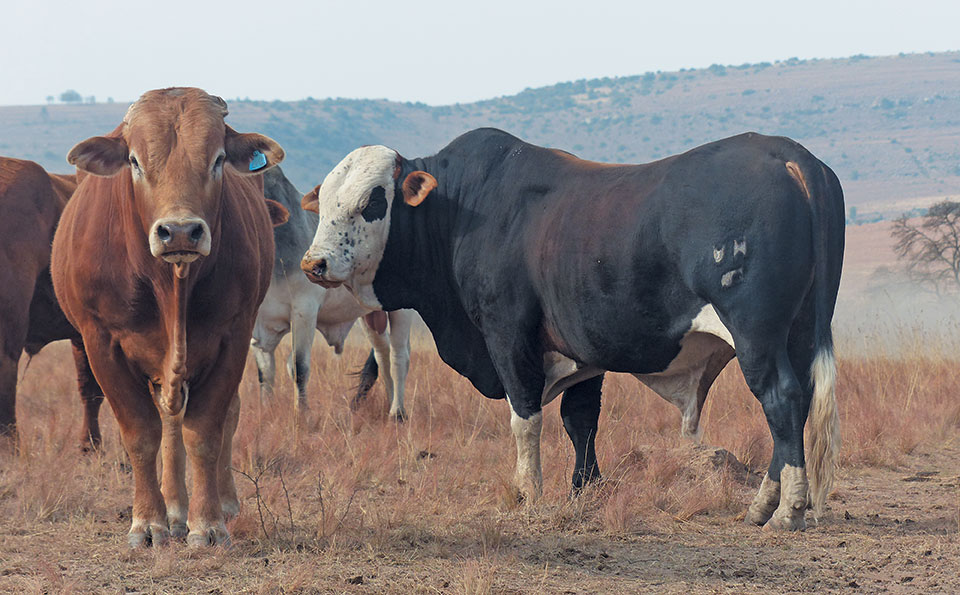
“It’s because of this that I could start farming cattle [in Cathcart],’’ he says, pointing to his cabbages.
He immediately transferred his livestock there, then began purchasing bulls from Eastern Cape stud and commercial farmers to improve the genetic quality of his herd.
In 2011, he received a 1 337ha farm, also near Cathcart, through the state’s Land Distribution for Agricultural Development programme and began to increase his herd significantly. Today, he has more than 500 breeding female animals.
Bulls used include Brahmans, Bonsmaras, Simbras and Beefmasters. All cattle receive a protein lick in winter, and a phosphate lick in summer.
READ How to select a top-performing beef cow
Although the beef herd is farmed extensively, fodder is brought in during dry spells, while 14ha of Smutsfinger grass (Digitaria eriantha) also makes a valuable contribution in this regard.
The cattle are dipped four times a year, and also receive parasiticide injections to manage tick loads. Cows are run in herds of 40 with two bulls during the breeding season, which extends from November to January.
The herd achieves a 75% calving rate, and weaners are marketed at eight months at an average weight of 260kg. Sithembele normally retains about 50 replacement heifers, while old cows are sold for use in traditional ceremonies.
In addition to cattle, he runs a flock of about 130 Boer goats, which enables him to make the most of the more rugged areas. He markets kapaters to the formal market at about two years of age.
Interestingly, vegetable farming remains his more profitable enterprise: “I did well out of my cattle this year, but vegetables are still more profitable,” he says.
Phone Sithembele Malgas on 063 302 1859.

